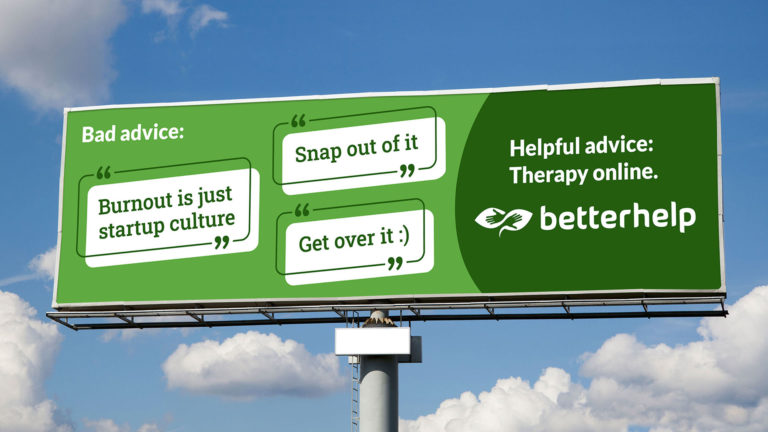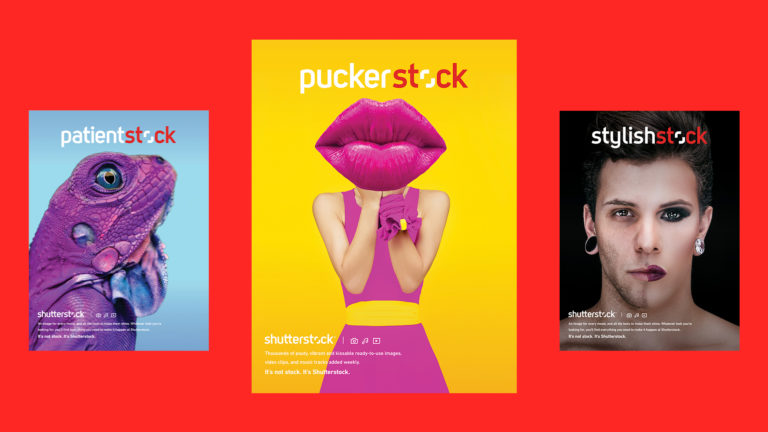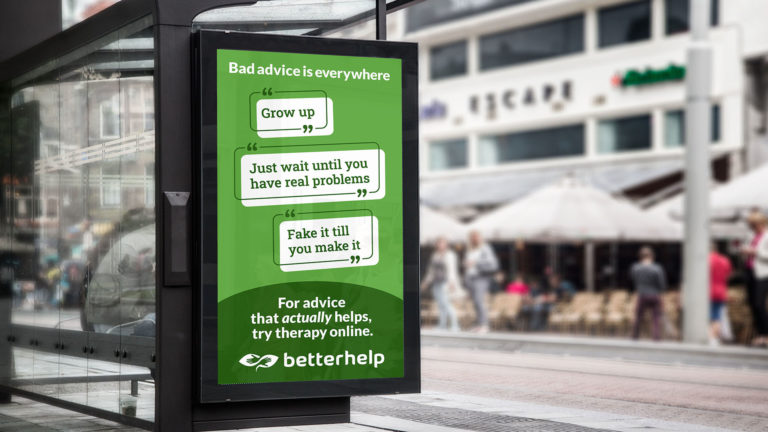30-second summary:
- The advertising-sponsored media model continues to win as Netflix and Apple add new advertising and sponsorship opportunities to their ecosystems
- While great for advertisers there is a flip side that needs to be considered from the consumer’s perspective
- Mark DiMassimo, Creative Chief of NYC’s leading agency, DiGo discusses the cost of bad-for-business advertising and its link to consumer behavior
- He also explains how the 3M approach can be mapped and actioned across the consumer journey to create positive behaviors (examples included!)
Lu Chekowsky, a self-proclaimed hater of advertising, recently published a remembrance of her friend, mentor, and the closest thing the religion of creative advertising had to a saint, the late Dan Weiden.
Within the piece, Chekowsky reflects that advertising is, “a business that guarantees a sunny future, but only once you’ve bought all the right things in all the right order.”
Latest developments and repercussions
The unfortunate reality is that advertising has the power to fuel a media ecosystem that can be bad for mental health. With both Netflix and Apple adding new advertising and sponsorship opportunities to their ecosystems, it seems as if the advertising-sponsored media model has won a unanimous victory. This is not all for the good.
Advertising monetization puts a premium on winning people’s attention and keeping them engaged, both their attention and their emotions, as much as possible for as long as possible.
As Reed Hastings, CEO of Netflix has famously said,
“We compete with sleep.”
He stated this when Netflix was wholly subscription-supported. It’s the advertising model that has led to rampant conspiracy theories – including fueling the repugnant and dangerous lies of Alex Jones – hyperpolarized social media, and widespread mental health challenges. In these instances, advertising is getting people to do things that are ultimately bad for them.
The dark side of advertising
Edward Bernays, sometimes described as ‘the Father of Public Relations and the Father of Advertising’, demonstrated how advertising could be used to make cigarettes into a mass product, consumed by men and women alike – ‘Torches of Freedom‘ – while also fomenting anti-progressive revolutions in Central America.
Fresh air and clean tap water have no revenue models to support massive advertising campaigns. Tobacco did and does. In 2019, the largest cigarette and smokeless tobacco companies spent around $8.2 billion on advertising and promotional expenses in the United States alone.
Throughout the history of advertising, things have been this way. Products that are addictive (tobacco, alcohol, pharmaceutical pain killers), habituating (social media), built into a system that reinforces their need (oil, gasoline, and Round-Up), and high-margin (most of the aforementioned) get the big advertising budgetary support.
The cost of problematic advertising
Take the recent lawsuit against Juul. While the company is now paying $439 million to settle over its problematic marketing to underage youth, that doesn’t somehow reverse the fact that 14 percent of high schoolers have vaped recently according to a government study. That number should be zero.
Or the ceaseless opioid epidemic that kills around 100,000 Americans annually. Purdue Pharma’s campaign had millions of doctors liberally prescribing opioids across the country for years, and only in recent years has come under scrutiny.
It doesn’t end at encouraging physical addictions, either. Meta Platforms Inc., the owner of Facebook and Instagram, has been under scrutiny due to the Cambridge Analytica scandal for years and is still paying for it in the company’s stock price.
Retaining audiences through responsible advertising
The above material is enough to make some people want to turn away from the whole system. Yet, while some people believe the only answer to the poisonous effects of advertising is no advertising, those of us in the business recognize that persuasion through media is as inseparable from human beings as breathing.
However, it isn’t as much of a lost cause as some might be inclined to think. Evidence suggests that advertising considered bad for people’s behavior is ultimately very bad for business. That, in the short run, addictiveness and high margins to spend on advertising will work, but over time there isn’t enough money to overcome a reputation crisis. The DiGo/Market Theory AI Positive Behavior Change Index study, a rigorous quantitative national study fielded over the past two years, shows that companies such as Juul, Purdue, and Facebook all pay a high price in the marketplace for being seen as bad for behavior.
Brand marketers can take lessons from how Purdue and Juul had to eventually pay up for their actions in lawsuits, while Meta paid with its lack of success in the Metaverse. This indicates that consumers punish companies, making growth increasingly expensive. Behavioral polluters don’t go unpunished.
Harnessing the power of positive behavior in advertising
Still, we in the advertising industry don’t have to wait for bad behavior to turn into bad business. In fact, advertising’s most pernicious influences come from the power to affect belief and behavior, which also means that advertising can promote positive behavior change.
This has long been the role of advertising. When America’s first advertising agency was launched in 1841, life expectancy at birth was about 40 years. Today, it’s about double that. Effective advertising for fitness solutions and therapy has enormously changed our health-related behaviors for the better.
The 3M levers
At the agency I founded more than a quarter century ago, we were 100 percent focused on positive behavior change. Over the past year, we’ve continued working on counteracting the negative effects of those bad-for-you business models. And to do so, we came up with our process for positive behavior change marketing, with the 3M approach:
1. Motivation
Motivation comes from why you want to do a thing. The more motivated you are to do something, the more likely you are going to do it. While differentiation matters most in building a brand, motivation is essential to build a behavior-change brand. When someone wants to change behavior—to get fit, lose weight or improve mental health —we often hone in on motivation, so having the brand increase motivation at each key decision point is crucial.
For example, in our work with BetterHelp, we focused on creating more “starts” in therapy for more people, overcoming a host of cognitive biases. We relied on a single cognitive-behavioral strategy, the ‘Cognitive Dissonance theory’ to efficiently cut through them all. People like to think of themselves as reasonable, and have a strong need to appear consistent. We used analogies to show the unreasonableness of rejecting help for mental health problems. In this way, we motivated people to change habits and seek help.


2. Momentum
Momentum is the energy for moving forward in a given moment, and at that moment, there must be a trigger to action that is easy to execute. Easy to see, easy to comprehend, easy to achieve. But ease is not enough for optimal results. Inner momentum must be activated as well.
Making it easy to do something works better than making it matter more. If you want to change something, find the key behavior and use your design sense to make it easier for the consumer to execute. For instance, if you want to drink more water, put a glass of water by your bed at night. If you are doing it to improve your marketing results and your customer, client, or member success, then design momentum into your key touchpoints.
Yet, in some cases, it can be hard for many of us to know exactly what good behavior looks like, or the journey to achieve momentum sometimes is tenuous. That’s why in our work with Partnership to End Addiction our focal point was making sure people knew how to become motivated to get help.
In this campaign, we helped assert that addiction starts with connection. We effectively made known that addiction can end through the support of loved ones, and, with that, made known that Partnership to End Addiction has resources for family-based solutions. While addiction is never easy, momentum to end addiction comes from both within and through external support. Knowing that resources to enable the momentum to end addiction exist can greatly help those impacted by addiction and their families.
3. Moments that Matter
Moments that Matter are the decision points along the consumer journey that make all the difference. It makes sense to find the bottlenecks and use behavior change marketing to blast them wide open.
Together with Shutterstock, we made it known that this company unlocks creative potential, enabling creative people to realize their best ideas. Eliminating a bottleneck for pure, unfiltered creativity and allowing Shutterstock to ensure their users have their own “moments that matter” allowed them to improve their work as creatives in a new open-minded, less rigid way, improving their careers and lives.


In closing
Being good for behavior is increasingly good business. Every company should know its PBC Score, and work to make its effect on behavior as positive as possible. In the long run, what’s good for people will prove to be good for business too.
Mark DiMassimo is the Founder and Creative Chief of DiGo (DiMassimo Goldstein), the industry-leading agency in Positive Behavior Change marketing, which he founded in 1996 in New York City and has appeared on Inc’s list of America’s fastest-growing private companies four times and been named an Adweek Gold Best Agency.
Subscribe to the ClickZ newsletter for insights on the evolving marketing landscape, performance marketing, customer experience, thought leadership, videos, podcasts, and more.
The post The 3M levers advertisers can use to trigger positive behavior change appeared first on ClickZ.
from ClickZ https://ift.tt/Nf35hme
via IFTTT


Comments
Post a Comment